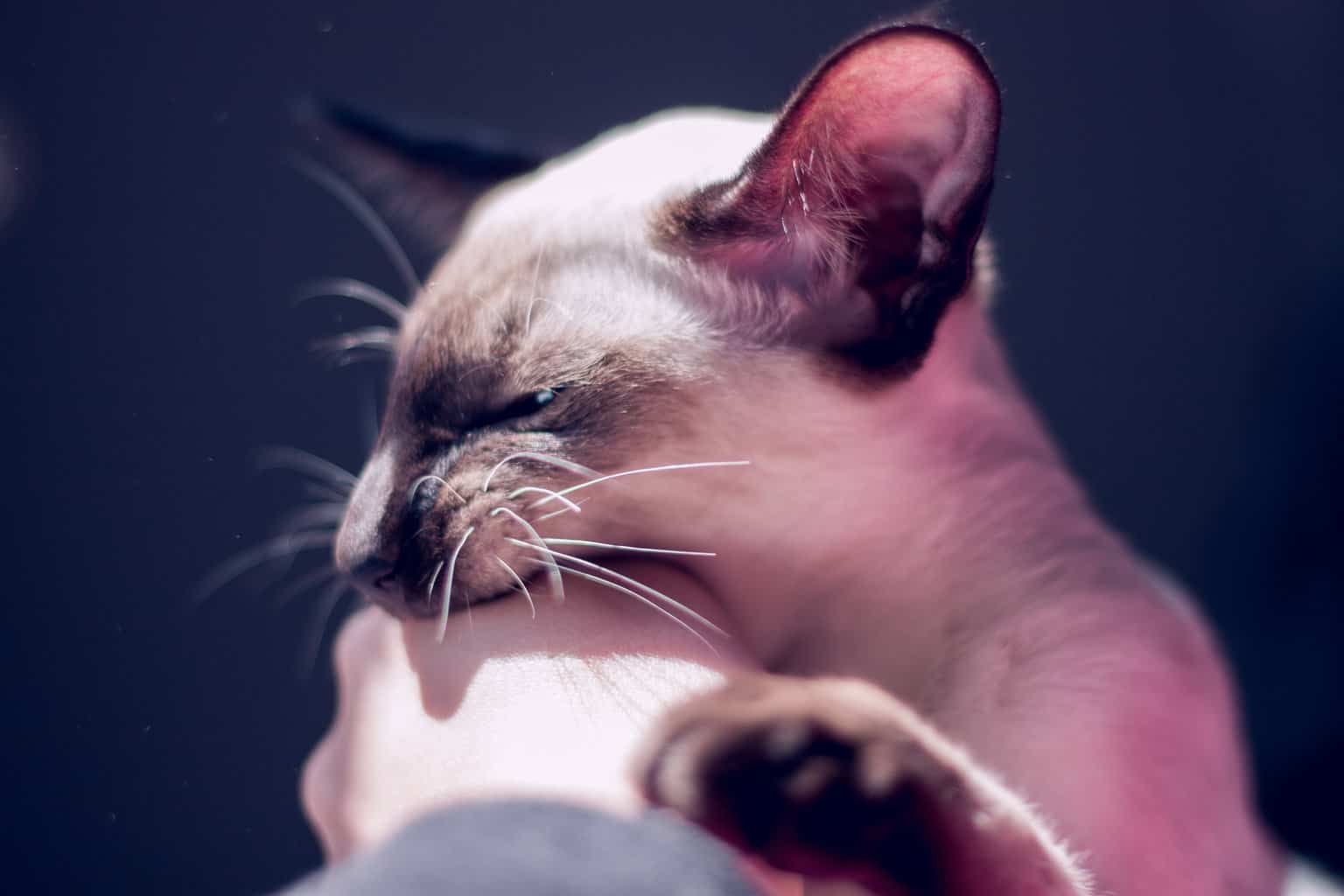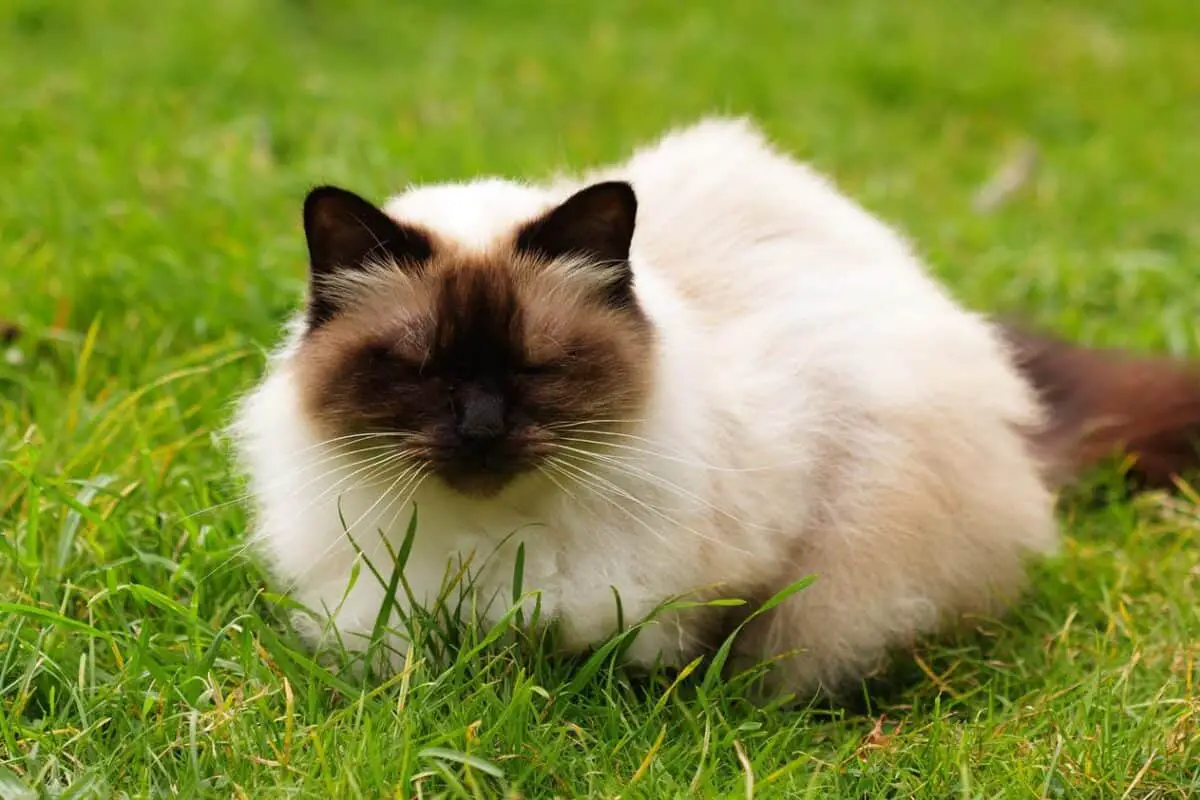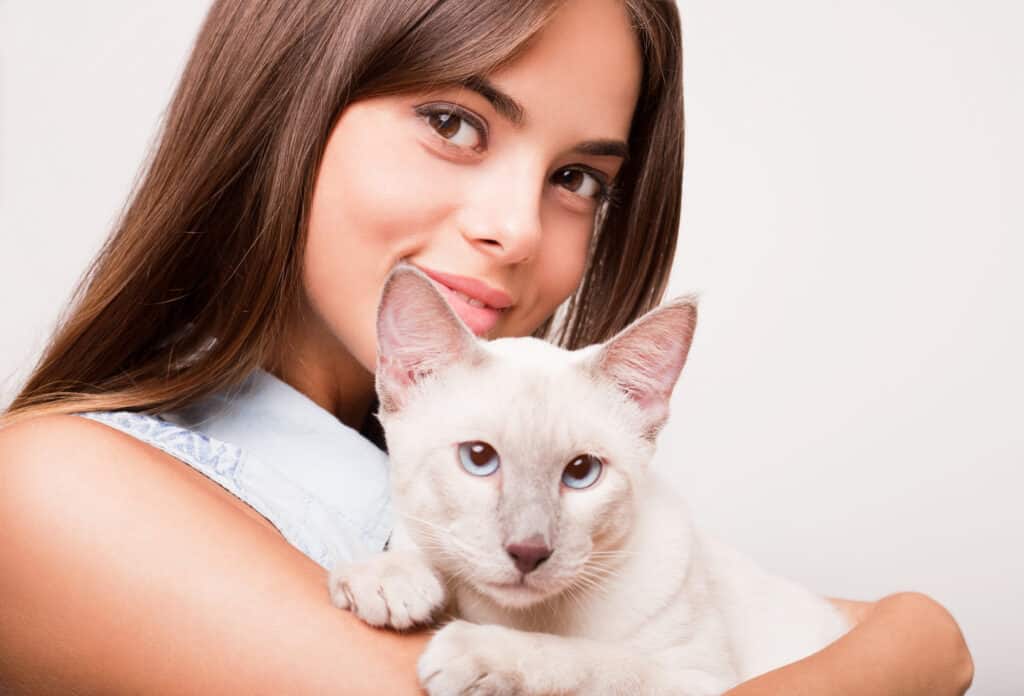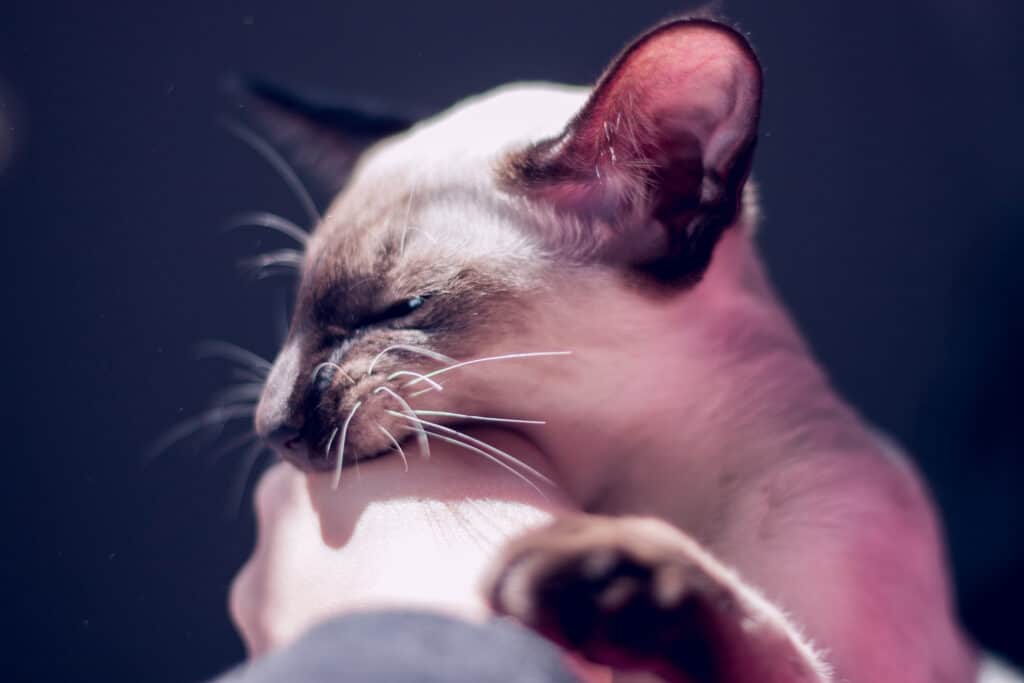Siamese and Himalayan cats have long been known to be fantastic companion breeds, although they differ in many ways. But have you ever wondered what specifically sets these two cat breeds apart from one another?
The key difference between Siamese and Himalayan cats is that Himalayans are a cross-breed of the Siamese and thus much younger. The biggest difference is their build, but they also differ in coat length, coloring, facial structure, lifespan, health, and other traits.
This guide explores the most prominent differences between Himalayan cats and Siamese cats, such as size, age, appearance, history, and more.
Learn about the health conditions that distinguish them, as well as how they differ in temperament around people and pets. Without further ado, let’s get into it!
Difference Between Siamese and Himalayan Cats
We’re exploring the following factors and how they differ among Himalayan and Siamese cats.
Note that Himalayan cats are actually a cross-breed of the ancient Siamese cat and the Persian breed. So, given that they evolved from the same evolutionary tree, Himalayan and Siamese cats have some common traits.
- Physical appearance/attributes
- Temperament and character
- Health and care
- Average size
- Average age
- Origins
Physical Appearance/Attribute Differences
Siamese and Himalayan cats have different coat lengths, colors/markings, eye colors, and physiques.
Coat
Siamese cats tend to have shorter coats, whereas Himalayan cats take up the long-hair trait of their Persian side.
Coloring
Himalayan cats are mostly cream/white but inherited their specific color points (face, paws, ears, and tail) from the Siamese cats that they were cross-bred with.
Himalayan cats generally come in the same colors as Siamese cats; blue, cream, red/flame, cream, tortoiseshell, seal, and lilac. However, their coloring is often a bit lighter and less pronounced than their Siamese counterparts.
Eyes
Siamese cats are well known for their vivid blue eyes. On the other hand, the Himalayans can have blue, copper, or green eyes.
Siamese cats can also have a genetic mutation that gives them crossed eyes (Convergent strabismus), but this gene does not manifest in Himalayans.
Physique
Looking at the physical properties of both cats, it is clear that Siamese and Himalayan cats look very different, and this is easily the most significant difference between the two breeds.
Siamese cats have prominent, triangular faces and large pointy ears. Their necks are long and connect to slender, muscular, and agile bodies that end in a thin but long tail.
On the other hand, Himalayan cats are much rounder and less angular than Siamese cats. They have stubbier legs, fatter necks, fluffier tails, and gentle, round, doll-like faces.
Because of their long and fluffy hair, the Himalayans also appear well-padded, even if they’re not fat under their thick coats.
Size
Himalayans are medium-sized, yet bigger-boned cats and are less muscular than Siamese.
On average, the Himalayans weigh between 8 and 12 lbs and grow between 10 and 12 inches tall.
Siamese cats usually weigh 8-14 lbs and can grow up to a foot tall.
Interested to see how that compares with other cat breeds? Have a look at our cat breed comparison chart.
Temperament and Character
Although both Siamese and Himalayan cats are loving companion breeds that are ideal for families and together with other pets, they differ in their dependence on humans.
General Temperament
Siamese cats are sometimes known for excessive dependence on humans because of their constant need for attention. They are loving, snuggly, vocal, quick learning, energetic, and playful.
Himalayan cats aren’t as needy as Siamese cats, and although they’re pretty docile, they are also prone to bursts of sudden energy and playfulness.
If you’re the type of cat parent who likes to regularly spend time with your cat but also want a cat that can be independent, a Himalayan may be a better choice.

Temperament Around Children
Because they’re so needy and want lots of attention, Siamese cats generally do well around children and in family homes. They love the attention and endless play time that kids will provide them with.
Himalayan cats are well-known for being friendly to all, including children.
However, while some Himalayans are more energetic than others, they are quieter and more docile but very loving and sweet. They will rarely lash out at kids unless driven into a corner. Himalayans are a safe choice to raise together with children.
Temperament Around Other Pets
Both Siamese and Himalayan cats adapt well to other cats and often even enjoy the company of both cats and dogs.
Health and Care
As with any purebred cat, Siamese and Himalayan cats are prone to health issues specific to their breed.
Siamese cats are known for being at risk for eye problems, respiratory, or dental problems.
Himalayan cats are especially prone to polycystic kidney disease and nervous system disorders.
Besides these specific health risks, Siamese and Himalayans are generally reasonably healthy compared to other purebreds.
Both breeds are long-lived
Himalayan cats have an average lifespan of about 9-15 years, whereas Siamese cats have a lifespan of a very similar 11-15 years (though some have lived up to 20 years).
We have created a nice comparison chart over the average cat age per breed.
Origins
Siamese cats are one of the most ancient breeds, having been around for centuries.
They have Asian roots, originating in Thailand (formerly known as ‘Siam’), where they were adored by Thai royalty.
They became popular domestic pets in the West in the 1800s. Many believe that the breed originated in the Ayutthaya Kingdom between 1351-1767 AD.
Himalayan cats are far more modern since they are a cross-breed derived from Persian and Siamese cats. They have origins starting in the ‘20s and ‘30s around the world.
Further, they weren’t bred initially intentionally but rather as a result of genetic research. It wasn’t until the 1950s that official cat associations recognized the hybrid breed.
Enjoy reading about Siamese cats?
Have a look at our other great articleas about this magnificent breed!
Our most popular article:
Introduction to Siamese Cats
Everything you need to know.
Or have a look at these popular reads from our website…
-

Why Do Siamese Cats Always Have Blue Eyes?
If you’ve ever looked up from work to see your cat staring at you, then the first thing you probably […]
-

Why Does Your Siamese Cat Bite So Much?
Siamese cats are a popular breed for their distinct beauty and character, so you might be surprised to find out […]
-

Wedgehead Siamese Cats Versus Traditional Siamese Cats
Siamese cat breeds are consistently ranked in the top 2 or 3 of the most sought-after cats in the world […]
References
https://en.wikipedia.org/wiki/Siamese_cat
https://en.wikipedia.org/wiki/Himalayan_cat
https://uk.mypetandi.com/new-owners/so-you-re-thinking-about-getting-siamese-cat/
https://www.hillspet.com/cat-care/cat-breeds/himalayan
https://peteducate.com/how-big-do-siamese-cats-get/
https://en.wikipedia.org/wiki/Ayutthaya_Kingdom





